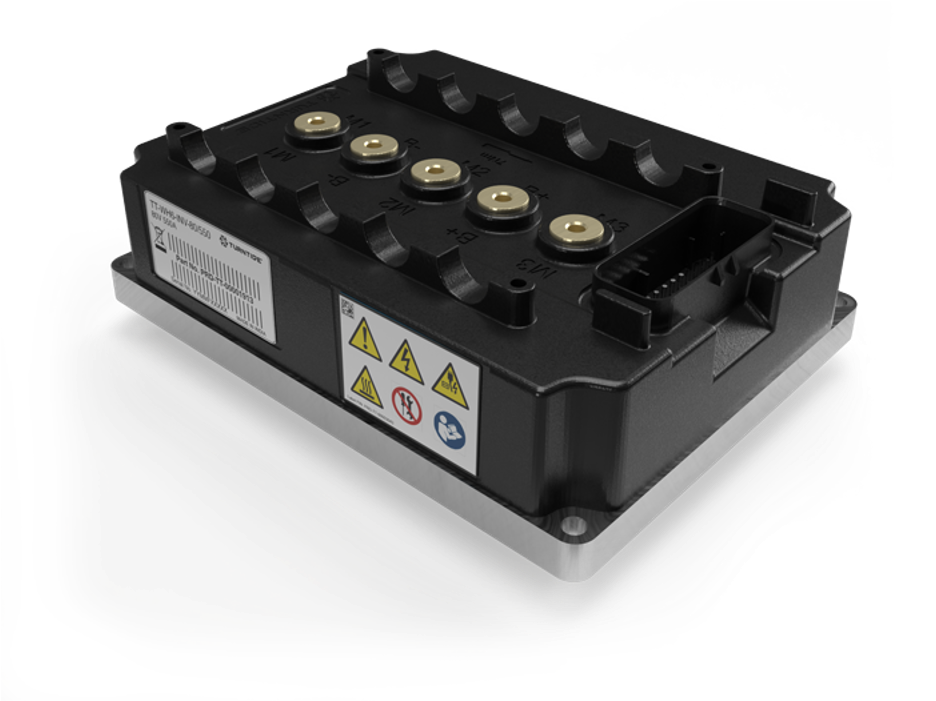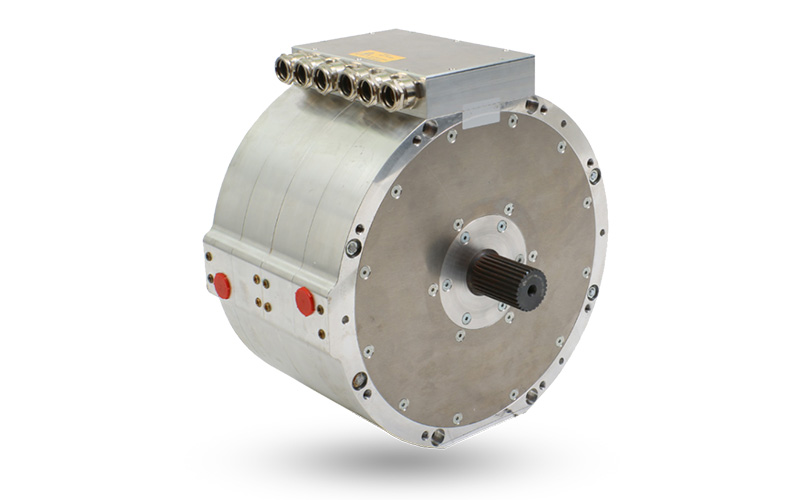How Electrification Is Quietly Transforming Dirt Bikes, Drones, & More
As electrification and hybrid systems reshape the transportation and equipment markets, its potential is taking off in unexpected and quietly powerful ways. From off-road recreation to precision agriculture, companies are embracing electric and hybrid systems to improve efficiency, reduce maintenance, lower environmental impact and eliminate noise pollution.
It’s not just happening on highways or construction sites. Today, drones are electrifying crop dusting, delivering fertilizer with precision and zero emissions. Electric dirt bikes with near-silent speed and instant torque and performance. These aren’t just novelties; they’re signs of a broader shift.
At the center of these breakthroughs are advanced electric motors and sophisticated power electronics that deliver performance, control and rugged reliability in compact, efficient systems. Some solutions offer original equipment manufacturers (OEMs) a way to integrate compact axial flux motors and power electronics into these emerging platforms.
Here are four surprising applications where electrification is gaining ground and redefining what’s possible.
1. Electric Dirt Bikes: Power & Precision Without the Noise
Electrification is transforming the world of dirt bikes, where riders are embracing high torque and instant throttle response—minus the roar of a combustion engine. Global sales of electric motorcycles are projected to surpass 15 million units by 2030, with off-road and recreational segments among the fastest growing. The switch to electric isn’t just about sustainability; it’s about unlocking a better ride.

A U.S.-based electric dirt bike OEM, is redefining off-road performance. The company by paired high-efficiency power electronics with a compact, high-output motor, showcasing how integrated electrification systems can unlock new levels of performance while maintaining a lightweight, rugged design.
By integrating an 80-volt (V) inverter with a 185-millimeter, air-cooled motor, the dirt bike OEM delivers up to 30 kilowatts of peak power in the most demanding off-road conditions. The dirt bikes give riders the speed, control, and responsiveness they demand without compromising on weight or durability.
For OEMs, this signals a broader opportunity: performance and precision can be achieved with sustainable solutions.
2. Crop Dusting: Cleaner Fields, Quieter Skies
Agriculture has steadily embraced electrification from automated irrigation and greenhouse ventilation systems to the rise of battery-powered tractors. Now, that shift is taking to the skies. Electric-powered drones now dominate new deployments in aerial crop spraying. Analysts forecast that the global agricultural drone market is projected to exceed $12 billion by 2030.
In aerial crop dusting, electric drones deliver fertilizers and pesticides with greater precision. These electric systems offer better control, reduced fuel costs, and the ability to operate in noise-sensitive environments where traditional aircraft would be too loud or disruptive. Trials show they can also reduce pesticide use by up to 50 percent and boost yields by 10% to 20%, while lowering overall operating costs by 20% to 30%.
Meeting the power demands of flight and spraying in a compact airborne system requires more than just swapping out a gas engine. It takes a systems-level approach to energy storage, power conversion, and motor design.
That’s exactly the challenge tackled by a drone platform team that uses four high-efficiency inverters per aircraft to power its electric propulsion and spraying systems. The result is precision crop treatment, quieter operation and greater energy efficiency all packed into a lightweight drone built to cover large agricultural areas efficiently.
With electrified crop dusting, farmers gain greater control and agility in their operations while helping agriculture become smarter and more sustainable.
3. Power Sports: The Thrill Without the Racket
Side-by-sides, all-terrain vehicles, jet skis, and snowmobiles have long been associated with noise, emissions and maintenance headaches. Electrification is changing the game, offering riders the same experience with less disruption to riders and nature alike.
Today’s electric power sports vehicles combine rugged durability with efficient drivetrains that reduce downtime and environmental impact. The global electric power sports market is projected to reach $4.2 billion by 2030, promising quieter, cleaner rides that restore peace to busy lakes, trails and recreation areas.
For OEMs, electrification offers more than a green badge. It’s a way to meet growing consumer demand, unlock new performance benchmarks, and access new markets. Axial flux motors paired with integrated controls provide the torque, compactness, and efficiency needed to make electric power sports not just viable but preferable.
4. Street Sweepers: Cleaner Streets, Quieter Cities
Municipal fleets are under increasing pressure to meet noise and emissions regulations, and street sweepers are among the first to make the switch. Quiet, all-electric models are being deployed in urban environments where combustion engines are disruptive or restricted, helping cities meet environmental goals while keeping neighborhoods clean.

One leading manufacturer of road maintenance equipment needed a drivetrain for municipal sweepers. They wanted a fully electric, compact, municipal sweeper designed for enhanced efficiency, reliability and long-duration operation in urban environments.
Street sweepers have demanding torque profiles because of frequent stop-and-go operation, heavy brush loads and variable terrain. These conditions call for drivetrains that are robust and intelligently managed. By replacing the traditional system with an axial flux motor and advanced electrification system, the new design delivers superior power density, torque, and efficiency. This allows for quiet, around-the-clock operation whether climbing hills or navigating tight city streets.
Looking Beyond the Obvious
Electrification isn’t just reshaping passenger vehicles. It is quietly transforming niche and high-growth markets where agility, efficiency, and environmental performance are critical. Electric and hybrid technology is a cost-effective way to sustainably achieve optimized performance. From dirt bikes and drones to sweepers and power sports vehicles, these emerging applications demand more than standalone components. They require intelligent, integrated systems that combine high-efficiency motors, power-dense inverters and real-time control.
A systems-level approach to electrification and hybrid systems enables OEMs to accelerate product development and meet growing regulatory and customer demands while entering markets that were previously out of reach. The quiet evolution is underway, and with the right electrification strategy, it is gaining momentum in all the right places.